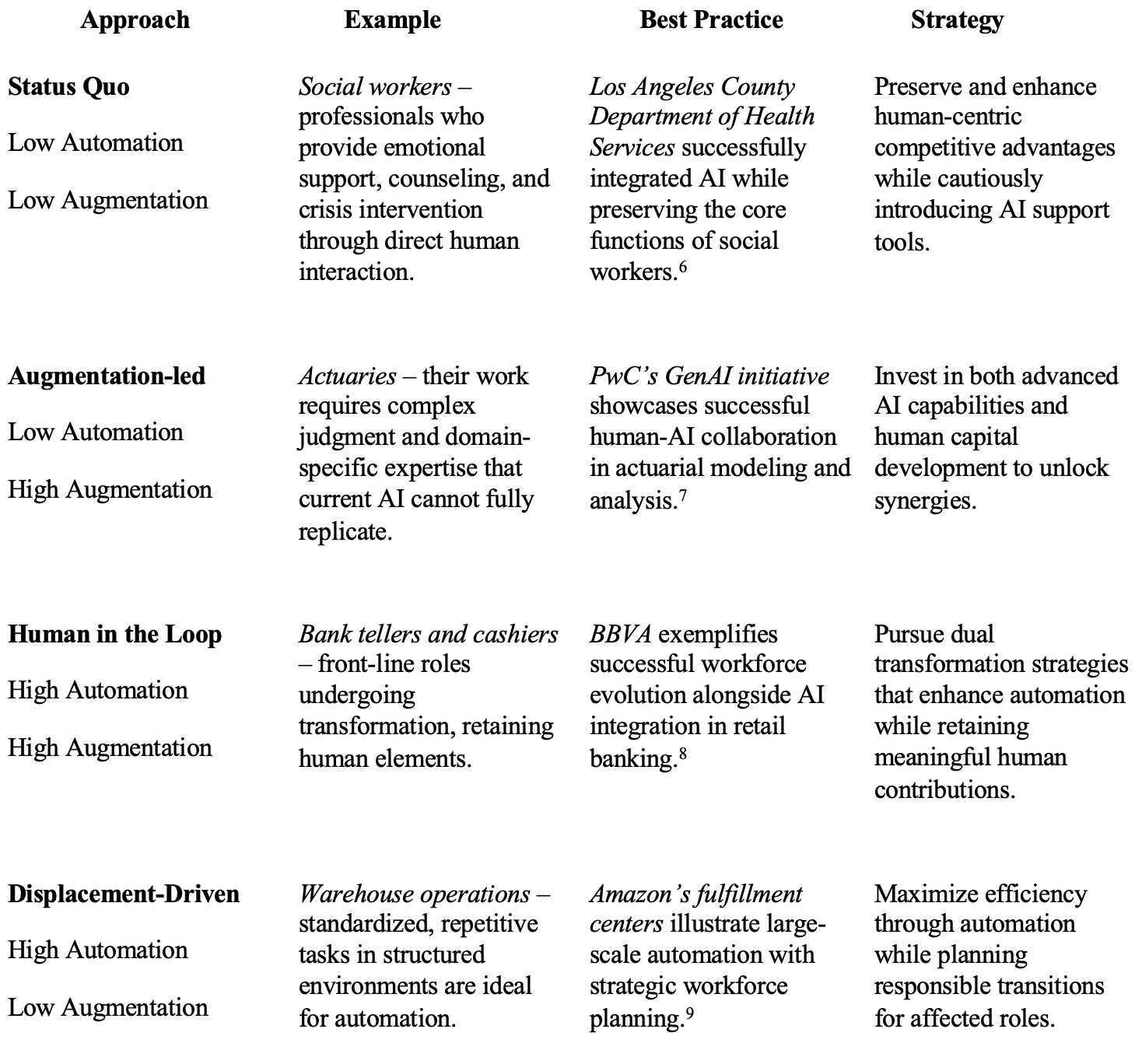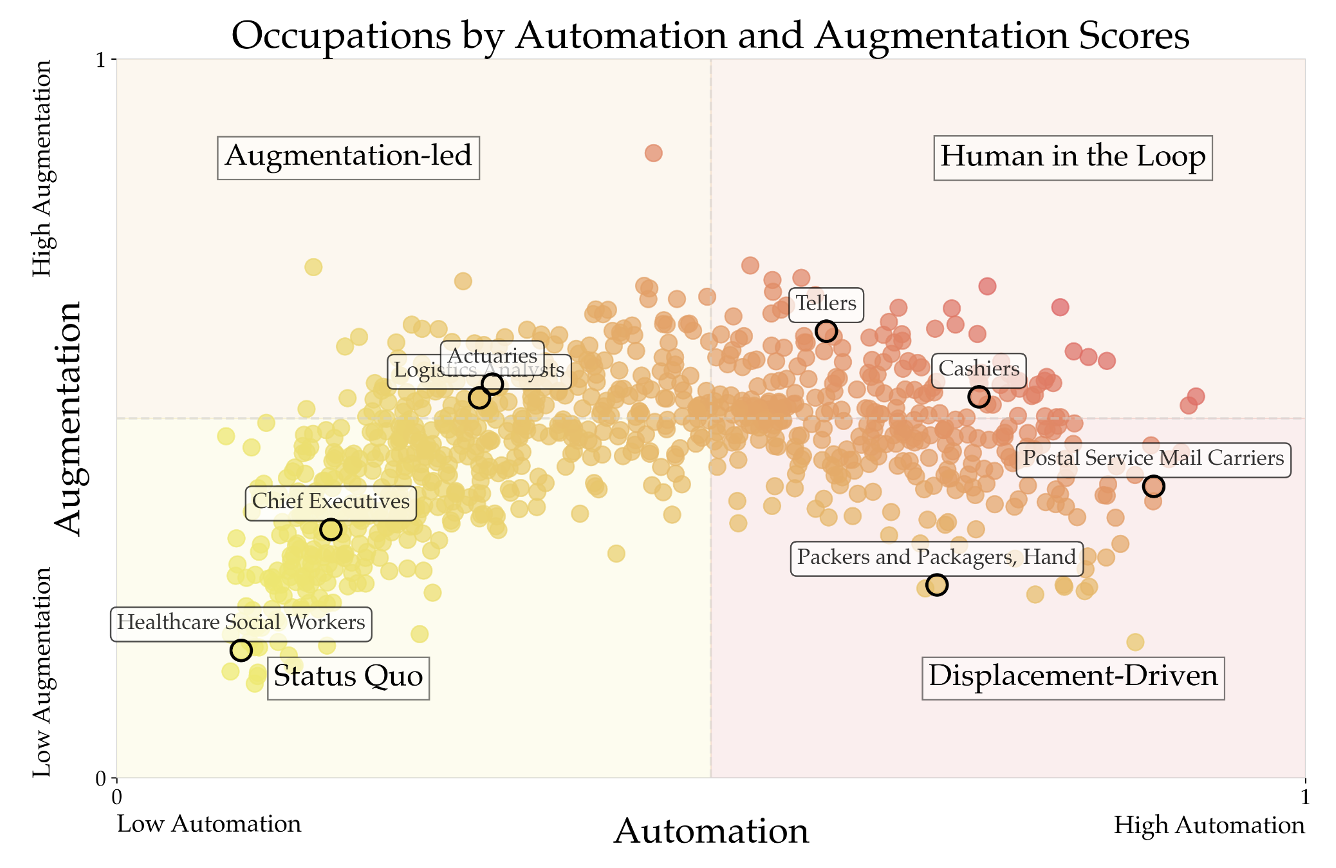California Management Review
California Management Review is a premier professional management journal for practitioners published at UC Berkeley Haas School of Business.
by Jaime Oliver Huidobro, Roberto García-Castro, and J. Mark Munoz

Image Credit | Jbgoals
Artificial intelligence is transforming how businesses operate, structure their workforce, and create value. As AI evolves, organizations face critical decisions about which tasks to automate and which require human expertise. While AI adoption is now an imperative for firms and executives, the question still arises as of which tasks, decisions and jobs to automatize first, the speed of automation and how to reap the benefits from AI-driven augmentation. This article addresses some of these challenges.
Jack Azagury and Michael Moore. “Competitive Advantage in the Age of AI.” California Management Review Insights, (2024).
Mostafa Sayyadi and Luca Collina. “How to Adapt to AI in Strategic Management.” California Management Review Insights, (2023).
Recent research highlights AI’s role in redefining human labor, with some jobs facing automation while others require human creativity and social intelligence to complement AI’s capabilities.1 The tension between ”automation” and ”augmentation” will shape the debate of AI deployment in organizations and the future of work in the coming years. Building on existing human-centric approaches to AI, the authors developed an automation-augmentation model that frames organizational change along two critical dimensions: automation level and augmentation potential. This model serves as an evaluation tool to determine the speed at which jobs, tasks and decisions must be integrated with AI.
The proposed model identifies four strategic approaches (Status Quo, Augmentation-led, Human in the Loop, and Displacement-Driven), each requiring specific executive strategies and investment priorities. For each approach, the authors provide an example, best practice, and a recommended strategy. This viewpoint replaces the uni-dimensional focus on automation.
The distinction between “automation” and “augmentation” is not new. However, our approach is firmly grounded on recent quantitative works —the EPOCH Methodology developed at MIT by Loaiza and Rigobon.1 EPOCH serves as both a framework and a measurement system designed to help organizations quantify and strategically manage AI integration in existing tasks, decisions, and jobs. This methodology has been operationalized as a concrete solution through Epoch Metrics, a company that provides diagnostic tools to help organizations measure, assess, and design human-AI workforce transitions. Epoch Metrics enables businesses to calculate personalized EPOCH scores, identify strategic opportunities for workforce development, and implement human-centric AI integration strategies. Rather than remaining a theoretical framework, the EPOCH methodology offers organizations a practical approach to navigate AI adoption while preserving their most valuable human capabilities.2 By combining theoretical insights with practical approaches a roadmap for balancing AI-enabled efficiencies with uniquely human capabilities, thereby turning technological disruption into a source of sustainable competitive advantage.
In a growingly technologically-driven world, contemporary managers need to handle automation and augmentation well in order to make effective strategic workforce decisions. As McDonald’s recent frustrated automation experiment shows, managers who misjudge either automation or augmentation are prone to make consequential mistakes when allocating humans and AI to different tasks.3
Building on prior research1, the EPOCH Methodology quantifies uniquely human capabilities across five dimensions less susceptible to AI replacement: Empathy (understanding emotions and building interpersonal connections), Presence (physical interaction and spontaneous collaboration), Opinion (ethical judgment and intuitive decision-making), Creativity (generating novel ideas and unconventional solutions), and Hope (creating meaning and inspiring action).
The EPOCH tool measures jobs and tasks across these 5 dimensions to determine how human-intensive a particular task is in terms of empathy, presence, opinion, creativity, and hope. For example, a “mail clerk” occupation scores close to 0 whereas a “general management” position scores close to 1 in the EPOCH index. Loaiza and Rigobon (2024) computed the scores for the vast majority of occupations across many countries. Using these scores, they came with two dimensions depending on whether new AI systems substitute or complement existing human jobs:
As AI-driven automation becomes commoditized, competitive advantage in operations will come from strategically integrating technology while preserving human capabilities. This has applications in key management functions such as Operations Management: Productivity Optimization - identification of low-EPOCH tasks for automation, prioritizing AI implementation for repetitive, low-value activities to achieve rapid efficiency gains; Strategic Adaptation – detection of disruption threats early and adapt business models accordingly and incorporation of AI in ways that enhance human contributions rather than simply replacing them; Human-Centric Transformation – recognition that human capital will be the key differentiator as AI becomes ubiquitous. In Human Resources Management, it can assist in hiring and workforce planning, training and development, retention and engagement, and organizational restructuring.
Organizations face automation risk but are poised to build on the potential for human-AI augmentation strategies. Not all decisions and tasks present the same mix of automation and augmentation nor the same urgency, resulting in different speeds of AI adoption. Table 1 and Figure 1 below show four (4) distinct strategic approaches based on AI risk and enhancement potential as measured by the EPOCH Index and the derived dimensions of automation and augmentation.
Table 1: AI Automation and Augmentation Strategic Approaches

Figure 1: The Four Quadrants of AI Automation and Augmentation

The approaches shown in Table 1 suggest that some organizations may pursue multiple modes simultaneously, with different business functions demanding distinctive automation strategies and human-AI interaction models. For instance, a bank might be implementing a Displacement-Driven approach for transaction processing while taking on an Augmentation-led model for wealth management. Figure 1 qualifies and visually presents 4 quadrants of AI automation and augmentation. As illustrated, a company’s selected approach would have an impact on the speed of AI adoption.
Contemporary managers need to carefully select the optimal approach that best aligns with their organizational goals, structure, resources and capabilities. It is important to understand and have a plan of action for the selected approach. Anticipating transitions and shifts as the organization evolves is essential. Prioritizing and balancing resources carefully can provide the foundation for long-term success. The strategic framework grounded in the EPOCH methodology can guide organizations in balancing AI-driven automation with human-centric augmentation, enabling more effective workforce design and task allocation in the context of accelerating technological change.
In the AI era, sustainable competitive advantage will stem not from wholesale automation, but from orchestrating thoughtful transitions that recognize both technological potential and human value. Firms that excel at this balance—and calibrate the pace of change accordingly— will be best positioned to succeed in their business journey.